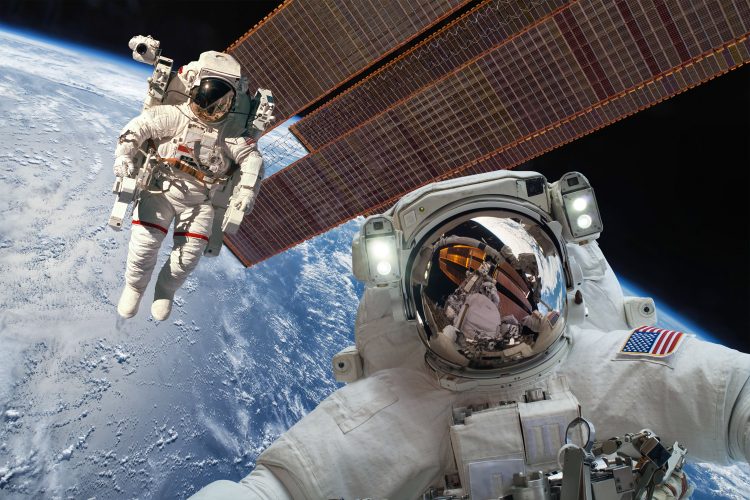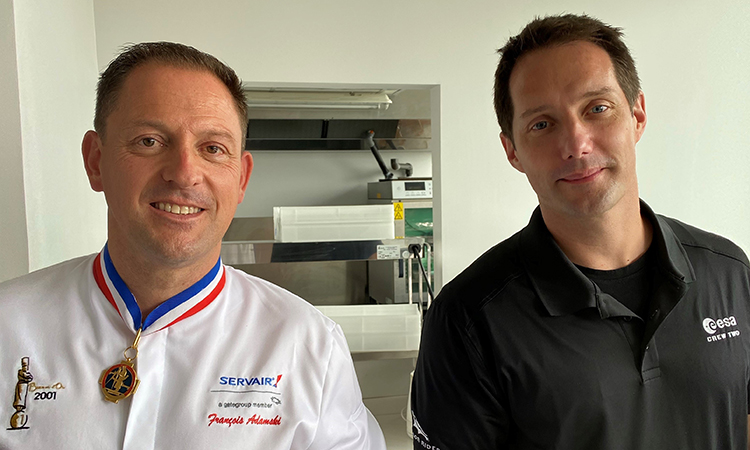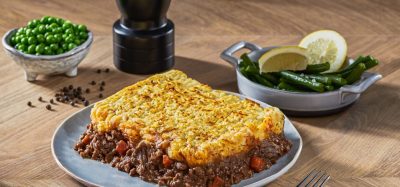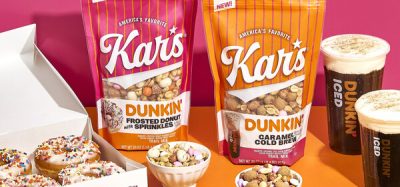Gourmet menus launch into space
- Like
- Digg
- Del
- Tumblr
- VKontakte
- Buffer
- Love This
- Odnoklassniki
- Meneame
- Blogger
- Amazon
- Yahoo Mail
- Gmail
- AOL
- Newsvine
- HackerNews
- Evernote
- MySpace
- Mail.ru
- Viadeo
- Line
- Comments
- Yummly
- SMS
- Viber
- Telegram
- Subscribe
- Skype
- Facebook Messenger
- Kakao
- LiveJournal
- Yammer
- Edgar
- Fintel
- Mix
- Instapaper
- Copy Link
Posted: 9 April 2021 | Bethan Grylls (New Food) | No comments yet
Servair created a space-friendly gourmet meal for the astronauts of the upcoming Alpha mission – here’s how they did it…


Creating tasty food for outer space is no mean feat...
Servair, the French and African leader in airline catering, has been asked by the European Space Agency (ESA) to develop a gourmet menu suitable for consumption in space.
The intergalactic banquet will be enjoyed by French astronaut, Thomas Pesquet, and his colleagues, who will be travelling to the International Space Station (ISS) as part of the upcoming Alpha space mission.
The ESA and NASA require a shelf life of at least two years at room temperature and follow very strict hygiene and health standards, so how do you create a gourmet product which is not only safe for space transportation but also tastes good?
New Food spoke to Deborah Rolland, Marketing, Innovation and New Markets Development Department, from Servair to find out more.
Safe for space
To develop this menu, the Servair team had to follow strict nutrition rules (less than 500mg of salt per serving and no alcohol), change its production from fresh to sterilised – while keeping the same flavours – and adapt recipes so the food could fit into bags and be safe for consumption beyond the Earth’s atmosphere.
The biggest challenge was developing a gourmet product with the constraints of heat treatment and reduced sodium and alcohol content, at the same time as delivering a menu which offered a dense texture suitable for consumption in weightlessness, the team explained.
To ensure the preservation of taste qualities while guaranteeing their duration through a very long shelf life at room temperature, Servair’s engineers worked in collaboration with the CTCPA (Technical Center for the Conservation of Agricultural Products) and chose a technology whereby the finished product is sterilised in a flexible bag.


Servair Corporate Chef Francois Adamski (L) and French astronaut Thomas Pesquet (R)
Storage
The flexible bag technology allowed the chefs to create a product that remains stable even in extreme conditions.
Unlike traditional canning, this pouch enables the product to retain its original flavours, while maintaining a very long shelf life. The flexible pouch technique also eases waste management on board, in comparison to cans that need to be lightened to match the ISS’ waste compactor operations.
The flexible pouch is made up of several layers of alternating aluminium and plastic, suitable for food contact and high temperature processing.
Inside the ISS, the air is confined and recycled, therefore the team had to ensure the packaging would limit the so-called ‘off-gassing’ phenomenon, ie, with the least secondary emissions of potentially toxic gases.
“This flexible packaging also has the practical advantage that it can be heated between two on-board heating plates, resulting in homogeneous heating,” said Rolland.
“Moreover, the bags are hermetic and its contents sterile after the use of the autoclave. Micro-organisms and spores are eliminated when using high pressure and high temperature of 120-130°C.”
Weightlessness
To enable weightlessness consumption, the food had to be quite thick, so that none of the sauce or small pieces of food could escape in the cabin. If the food is too liquid, it runs the risk of turning into bubbles or breaking into small pieces that could block some air filters.
Taste in space
When creating the menu, Servair organised a comparative tasting of the dishes prepared in the sterilised, flexible bags a few weeks before for the astronauts to try. Once in space taste becomes distorted, so the team had to adjust the recipes while developing them.
“For me, it was essential to preserve the flavours of the dishes, whether they were fresh or in sterilised bags,” François Adamski, Servair’s Corporate Chef, said. “We worked diligently to adjust the seasonings every time until we obtained a product that was very close in taste to its non-space version.”
Could this mission help future food?
The team believes their work will “enable long shelf-life food production with an excellent gustative finish”. The technique also has potential in other markets, including retail, military ‘meal ready to eat’ (MRE) and humanitarian food.
Related topics
Flavours & colours, Food Safety, Health & Nutrition, Ingredients, Packaging & Labelling, Processing, Product Development, Salt, Shelf life, Technology & Innovation
Related organisations
Servair, Technical Center for the Conservation of Agricultural Products








